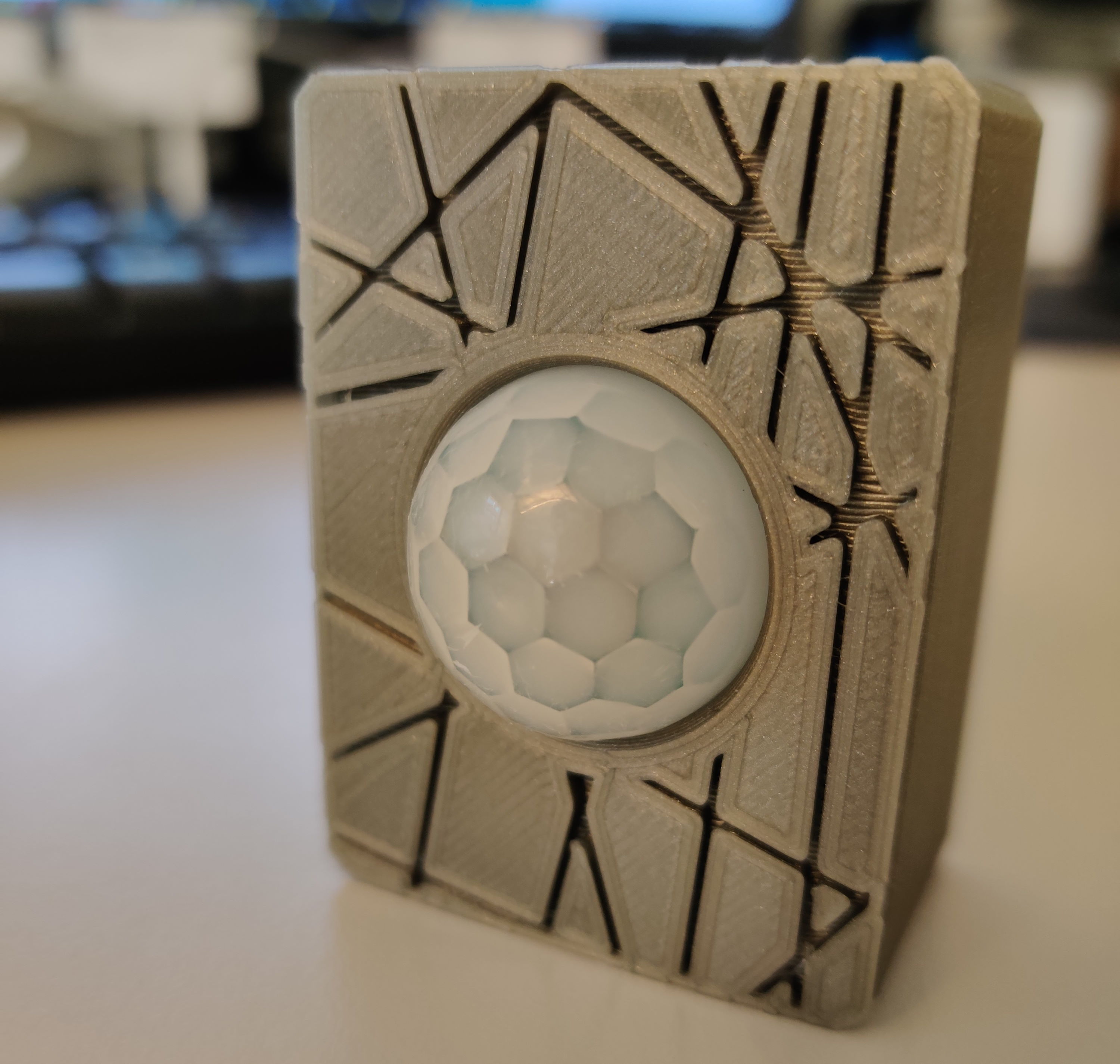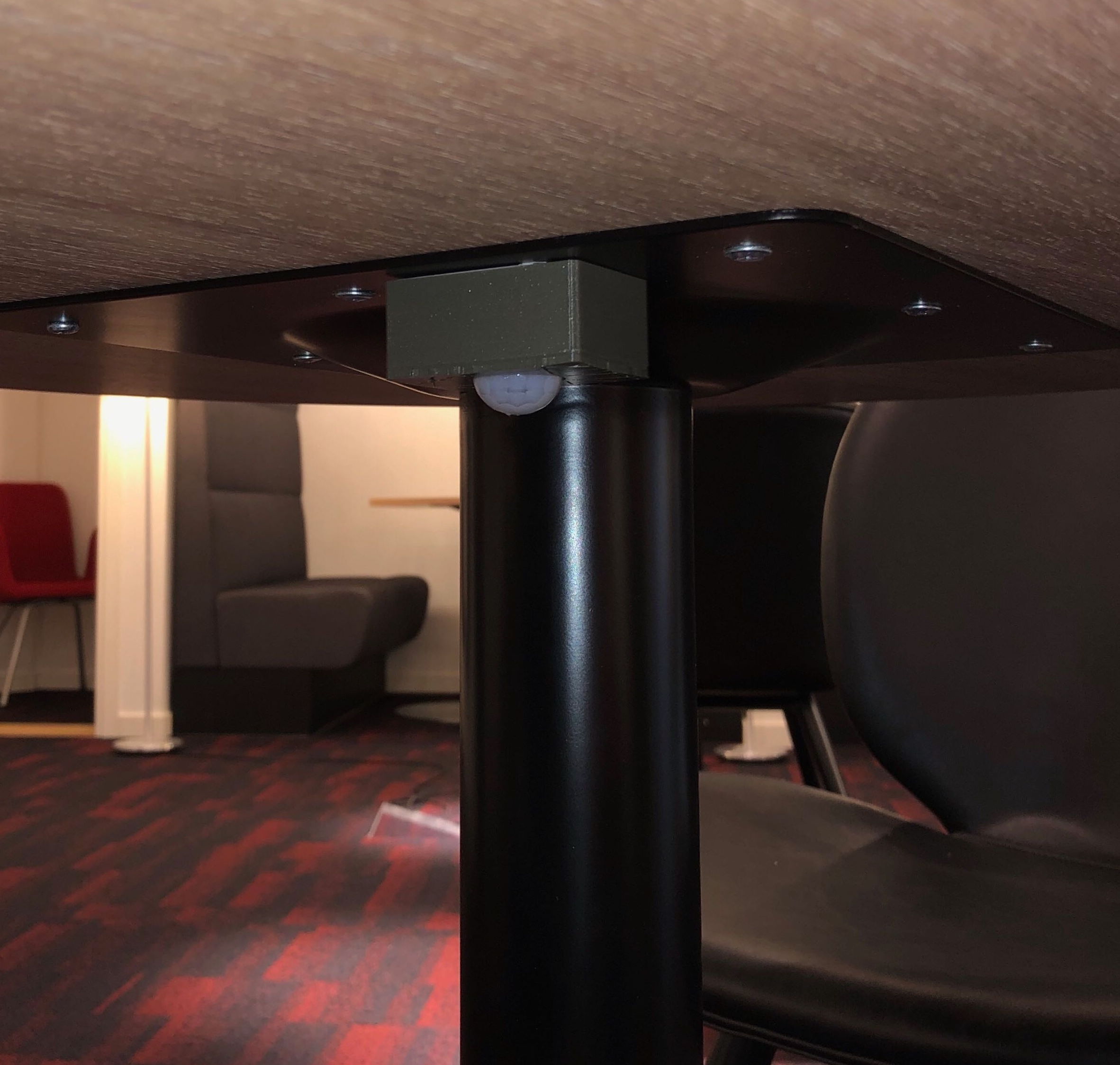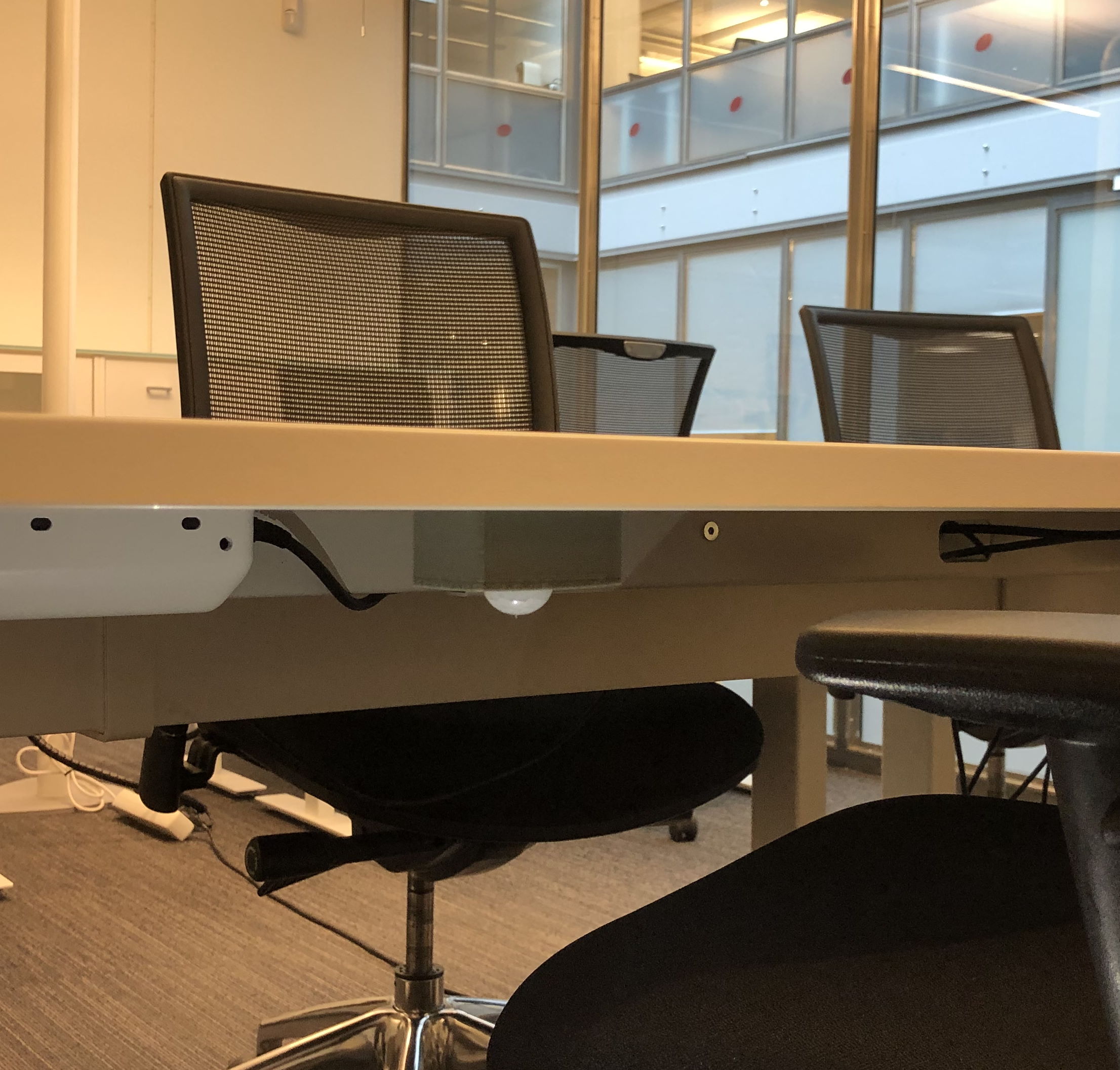
3D printed desk occupancy sensor
Make them good looking, robust, functional, and sellable.
At Thingsquare we use 3D printing for many of the IoT prototypes we build for customers.
Here are the top 4 reasons why we do it, and why you should do it too:
3D printing is a way to quickly create plastic structures by printing them in a 3D printer. The structure is designed in a Computer Aided Design (CAD) program on a computer.
Designed correctly, the printed plastic structures are surprisingly robust.
Printing a 3D structure takes anything from a minutes to hours. The more complex structure, the longer it takes.
Recently, the cost for 3D printers has gone down and they go for prices as low as $200 USD, up to several thousands. (See a good price guide here)
At the Thingsquare office, we primarily use our Original Prusa i3 MK3S, which we think prints at a good speed and produces robust and nice-looking results.
In the past, during prototyping of an IoT system, we would encase the prototype in a ready-made plastic box. This meant that we had to find a box that would fit the electronics, and glue the electronics to the inside of the box. The box would need to be large enough to fit the electronics, and it was difficult to find boxes that were just the right size for the project.
This meant that the box would end up being way too large for the prototype. Not good.
3D printing changed all this.
These are our top 4 reasons why we use 3D printing in our projects today.
Let’s face it, most IoT prototypes can look really bad in the early stages.
You need electronics to make an IoT prototype, but naked electronics look bad even in the eyes of people that like electronics. To most people, naked electronics look like it is broken – not something you would be proud to show to people.
By 3D printing a plastic case for your electronics, you will quickly be able to go from a prototype that looks like a rats nest of electronics to a reasonable product.
By 3D printing a plastic case for your electronics, you will quickly be able to go from a prototype that looks like a rats nest of electronics to a reasonable product.
Many IoT prototypes will be deployed in large numbers. For example, our hot desk tracking system can be attached underneath up to hundreds of desks in one office.
The 3D printed case make the prototype possible to deploy quickly and easily. Much easier than any kind of naked electronics would.
The case can even include ways to attach the prototype to where it is intended to be installed. For example by adding holes for screws that allow the prototype to be quickly attached.
Most IoT products include batteries. So you can 3D print a battery holder to make them easy to replace.

3D printed desk occupancy sensor

Desk sensors are attached underneath each desk

A desk occupancy sensor, installed
The primary purpose of the IoT prototype is to sell it: to customers, investors, project partners, new employees, and other stake holders.
IoT products are inherently physical and everyone wants to be able to feel your product by their own hands.
3D printing allow you to design a really good looking product, from the very early stages in your process.
Finally, there is a practical reason for 3D printing your IoT prototype: to make it robust.
IoT systems are deployed in locations where there is much action. There may be people moving around. It may be deployed outdoors.
With 3D printing, you quickly make your prototype robust. You will not have to worry about electronics getting short-circuited or batteries falling out. And no need to worry about your product being hit over its head.
At Thingsquare, we use 3D printing a lot in our customer projects. It is a great way to make even the early versions of the system look good. This makes the product both more robust and functional – but most importantly – easier to sell.
Thingsquare helps companies quickly prototype their IoT products – get in touch with us today to learn more!

Adam Dunkels
CEO

Fredrik Rosendal
CTO

Marcus Linderoth
VP Engineering







